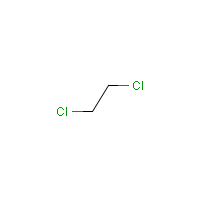Environment and Breast Cancer: Science Review
Originating list
« Place cursor over headings for an explanation of data.
The list(s) or database(s) in which the chemical was identified as showing an
increase in mammary gland tumors. CPDB: Carcinogenic Potency Database, IARC:
International Agency for Research on Chemicals Monographs on the Evaluation of
Carcinogenic Risk of Chemicals to Man summaries, NTP TR: National Toxicology Program
(NTP) Technical Reports, NTP 11ROC: NTP 11th Report on Carcinogens, CCRIS: Chemical
Carcinogenesis Research Information Service.
Carcinogenicity Potency Database, IARC Monographs, National Toxicology Program studies, Chemical Carcinogenesis Research Information System

Image from the National Library of Medicine
Associated chemicals
Names of closely related chemicals discussed in the "originating list" are
listed here if they were not separately reviewed.
none
Major use
We assigned each chemical into one of the following groups based on its major
sources and uses: industrial chemicals, chlorinated solvents, products of combustion,
pesticides, dyes, radiation and drinking water disinfection, pharmaceuticals, hormones, natural
products, and research chemicals.
Chlorinated solvent
Widespread exposure
If a chemical is a High Production Volume chemical, added to food, found in air pollution or consumer products, or causes greater than 5000 women to be exposed occupationally, it was judged to cause a likely widespread exposure to women in the United States.
More Likely
Human exposure summary
Information describing pathways of exposure for the general
population was obtained from a variety of sources, including IARC Monographs (9), NTP 11th
ROC (4), NTP Study Reports (3), and Hazardous Substance Database (10). Summaries of
chemical use in consumer products were developed from information found in US EPA's
Source Ranking Database (SRD) (11), the NLM Household Product Database (HPD)(12),
Scorecard (12), and Pesticide Action Network (PAN) Pesticides Database (13). If a chemical
could not be found in these sources, we searched ToxNet (14), PubChem (15), and The Merck
Index (16), and conducted searches by both name and CAS No. using Google.
The greatest source of exposure to 1,2-dichloroethane for most of the U.S. population is inhalation of the compound in contaminated air. Dichloroethane has also been detected in food items, possibly due to its use as an extractant in certain food processes (NTP 11th ROC). Also present in contaminated drinking water supplies due to its former use as a gasoline additive. Some use in consumer products (adhesives, rug cleaners).
Mammary gland tumor summary
A summary of findings related to mammary gland tumors, most
often excerpted from IARC Monographs or the NTP 11th ROC, and, in some cases,
supplemented by our evaluation of individual studies and reviews, is available for the priority
chemicals and 67 others.
NTP 11th ROC: When administered by gavage, 1,2-dichloroethane increased the incidence of mammary gland adenocarcinomas in female mice and female rats
IARC classification
Overall evaluation: Group 1: The agent is carcinogenic to humans.
Group 2A: The agent is probably carcinogenic to humans. Group 2B: The agent is
possibly carcinogenic to humans. Group 3: The agent is not classifiable as to
carcinogenicity in humans. Group 4: The agent is probably not carcinogenic to humans.
NA: not evaluated by IARC (9).
2B: Possibly carcinogenic to humans
Evidence in humans
Strength of the evidence in humans
(summary of epidemiologic evidence) and animals: sufficient, limited, or inadequate. If
IARC has not reviewed the chemical, this field will be labeled "NA".
inadequate
Tumor sites identified in IARC Monographs
If tumors were found in humans, the entry
in this field will be labeled "(human)." Unlabeled terms are from animal studies. Tumor
sites are abbreviated and can be referenced in the key (Table 1). NA: not evaluated by
IARC.
lymphatic system (human), leukemia (human), stomach (human), lung, lymphatic system, liver, mammary gland, uterus, forestomach
Evidence in animals
Strength of the evidence in humans
(summary of epidemiologic evidence) and animals: sufficient, limited, or inadequate. If
IARC has not reviewed the chemical, this field will be labeled "NA".
sufficient
US EPA cancer classification
The US EPA Weight of Evidence Characterization of the
chemical’s carcinogenic potential is listed: Group A: Carcinogenic to humans; Group B:
Probably carcinogenic to humans. Group C: Possibly carcinogenic to humans. Group D: Not
classifiable as to human carcinogenicity. Group E: Evidence of non-carcinogenicity for
humans. NA: Not evaluated by US EPA (17).
B2: Probably Carcinogenic to Humans, inadequate evidence
The National Toxicology Program Technical
Reports include a determination of the carcinogenicity of the test chemical in each sex and
species tested. Designations prior to 1983 are "positive" or "negative". After 1983, NTP
assigned designations of "clear evidence of carcinogenicity," "some evidence of
carcinogenicity," "equivocal evidence of carcinogenicity," "no evidence of carcinogenicity," or "inadequate study of carcinogenicity." The words "of carcinogenicity” are removed from the
field in this database to conserve space. "NA" indicates no NTP technical report for the
chemical (3).
Female rats
Positive
Positive
Female mice
Positive
Positive
Male rats
Positive
Positive
Male mice
Positive
Positive
Mutagenicity from CPDB
This summary of evidence from the Carcinogenic Potency
Database is labeled “Yes” if the agent is mutagenic or weakly mutagenic in the Salmonella assay
and “No” if not. NA: Not listed in CPDB. NA-S: Listed in CPDB, but no assessment of
mutagenicity in Salmonella is included (1).
Mutagenic
Mutagenicity from RTECS
This summary of evidence from the Registry of Toxic Effects of
Chemical Substances database (NIOSH 2005) is labeled “Yes” if the agent is listed as mutagenic,
“No” if not. NA: Not listed in RTECS (18).
Mutagenic